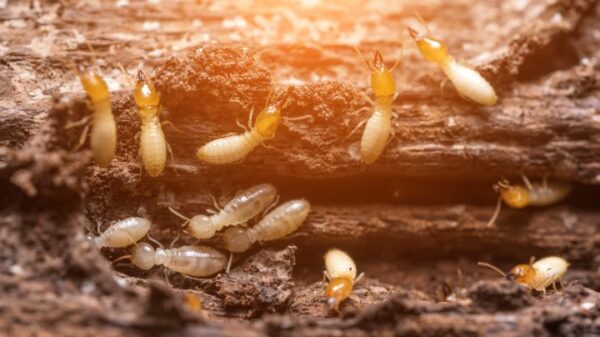
Choosing the Right Termite Repellent Masterbatch for Your Application
In the realm of modern construction and infrastructure development, plastic products have become indispensable, offering versatility and cost-effectiveness. However, with the advantages of using plastic also come challenges, one of which is the vulnerability to termite attacks. These destructive insects can compromise the integrity of plastic products, wires and cables, and irrigation pipes, leading to potential safety hazards and financial losses.
Enter termite repellent masterbatch – that is a specialized additive used in the plastic industry to protect plastic products from termite infestations. The masterbatch is a concentrated mixture of active ingredients that are dispersed within a carrier resin, which is then added to the plastic during the manufacturing process. The masterbatch is designed to repel termites and discourage them from infesting or damaging the plastic products.
How termite-repellent masterbatch works
The masterbatch contains specific active ingredients that have termite-repelling properties. These ingredients may include natural extracts, chemical compounds, or a combination of both. Common active ingredients used in termite repellent masterbatch may include essential oils, plant extracts, synthetic chemicals, and insecticides.
The active ingredients are present in a concentrated form within the masterbatch. This ensures that even a small amount of the masterbatch added to the plastic can provide effective termite protection.
The active ingredients are dispersed within a carrier resin, which acts as a vehicle to evenly distribute the repellent throughout the plastic product during manufacturing.
The termite-repellent masterbatch is added to the plastic material during manufacturing. It is mixed with plastic pellets or granules before the melting and moulding stages. The high temperature during the melting process helps to evenly disperse the masterbatch throughout the plastic.
The masterbatch is uniformly mixed with the plastic, ensuring that the active ingredients are evenly spread throughout the final product. This homogenous distribution maximizes the termite-repellent effectiveness across the entire plastic item.
Once the plastic product is formed, the active ingredients in the masterbatch start to work. When termites come into contact with the treated plastic, they detect the presence of the repellent and are deterred from approaching or infesting the material.
The termite-repellent properties are designed to last for an extended period, providing long-lasting protection against termite damage.
It’s important to note that while termite-repellent masterbatch can help protect plastic products from termite infestations, it does not make the plastic entirely immune for termites. The effectiveness of the repellent may vary depending on the concentration of active ingredients, the type of plastic, and the specific termites encountered. Additionally, other preventive measures such as regular inspections and maintaining a clean environment should also be considered to ensure comprehensive termite control.
Advantages of termite repellent masterbatch
The primary advantage of using termite-repellent masterbatch is its ability to protect plastic products from termite damage. By incorporating the repellent into the plastic during the manufacturing process, the final product becomes less attractive to termites, reducing the risk of infestation and subsequent damage.
Termite-repellent masterbatch is designed to provide long-lasting protection against termites. The active ingredients in the masterbatch are formulated to remain effective over extended periods, making it a reliable solution for termite prevention.
The masterbatch can be easily integrated into the plastic manufacturing process without requiring significant changes to the production methods. It can be added to various types of plastics, such as polyethylene, polypropylene, and PVC, making it adaptable to different applications.
The masterbatch ensures the even distribution of the termite repellent throughout the plastic product. This homogenous dispersion maximizes the effectiveness of the repellent, leaving no vulnerable spots for termites to exploit.
Some termite-repellent masterbatch formulations use natural extracts and plant-based compounds as active ingredients, making them more environmentally friendly than conventional chemical insecticides.
Termite-repellent masterbatch can be used in a wide range of plastic products, including building materials, furniture, packaging, and agricultural applications. This versatility allows for a broad scope of termite protection across various industries.
Incorporating termite-repellent masterbatch during the manufacturing process can be a cost-effective strategy for termite prevention. It eliminates the need for additional post-production treatments and maintenance, saving time and resources.
Unlike traditional pest control methods, such as chemical sprays or fumigation, which may require temporary evacuation or closure of premises, the use of termite-repellent masterbatch is non-disruptive to daily operations. It ensures continuous termite protection without affecting the functionality or appearance of the plastic products.
Using termite-repellent masterbatch reduces the reliance on potentially harmful chemical insecticides, which can pose health risks to humans and animals and have adverse effects on the environment.
By protecting plastic products from termite damage, the use of termite-repellent masterbatch can contribute to the longevity and overall durability of the items, potentially increasing their lifespan.
Application
Termite repellent masterbatch finds diverse applications in the plastic industry, safeguarding various products from termite damage. It shields wires, cables, cable ducts, silage bags, plastic moulded components, and irrigation pipes. Integrating the masterbatch during manufacturing makes these plastic items less attractive to termites, providing long-lasting protection and enhancing product durability.
Termites, highly organized social insects, pose a significant threat to wooden structures and cellulose-containing materials. Their hidden nature often leads to undetected infestations until substantial damage occurs. Prevention is crucial through termite-resistant materials and regular inspections to safeguard different products from termites. Termite-repellent masterbatch, integrated into plastic products during manufacturing, offers long-lasting protection against infestations.